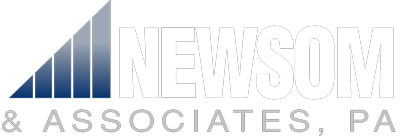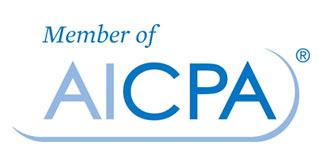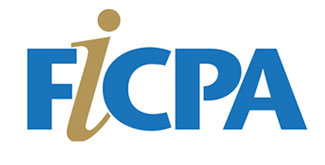Depreciation Deductions
Among the many changes made by the CARES Act, the one which may have the most impact is the correction of a technical error made in the Tax Cuts and Jobs Act of 2017 (TCJA). That error resulted in the 15-year recovery period that applied to qualified leasehold improvements, qualified restaurant property, and qualified retail improvement property being eliminated for such property placed in service after 2017. After the TCJA, the depreciation period for such property, now referred to as “qualified improvement property,” was 39 years and, as a result, did not meet the requirements for additional first-year depreciation (i.e., bonus depreciation). Under the CARES Act, qualified improvement property is now depreciated over a 15-year life and meets the criteria for taking bonus depreciation. The change is effective as if it were included in the TCJA. Thus, if your business is affected by this change, we can file amended returns to claim refunds for the deductions that should have been available to you had the technical error not happened.
Relaxed Rules for Deducting Net Operating Losses
The CARES Act also temporarily removed the 80 percent limitation on taxable income for deducting net operating losses (NOLs) for 2020. In addition, the CARES Act amended the rules for NOLs to provide for a five-year carryback of any NOL arising in 2018, 2019, and 2020. As a result, if applicable, your business can take such NOLs into account in the earliest tax year in the carryback period and carry forward unused amounts to each succeeding tax year. Alternatively, you can waive this carryback period and instead carry forward any NOLs to offset income in future years. Depending on expected tax rates and cash flow in future years, this waiver option may make more sense than carrying back any NOLs.
Reduction in Business Interest Limitation
The CARES Act reduced the limitation on the deductibility of business interest. For tax years beginning in 2019 or 2020, 50 percent of a business’s adjusted taxable income, rather than 30 percent, is used to determine the business interest limitation. A special rule is provided for partnerships. Under this special rule, the increase in the limitation to 50 percent of adjusted taxable income in determining the business interest limitation does not apply to a partnership for 2019, subject to certain rules relating to allocations to the partners. There is also an election under which a business can substitute its adjusted taxable income for its last tax year beginning in 2019 for its adjusted taxable income for 2020 in calculating the business interest limitation for 2020. Keep in mind that the business interest deduction limitation only applies if the gross receipts of your business exceed $26 million in 2019 and 2020; Additionally, certain types of businesses are exempt from the limitation.
Modification of Excess Business Loss Limitation Rules
The CARES Act eliminated certain limitations on excess farm losses of a business other than a corporation. This change applies to any tax year beginning after December 31, 2017, and before January 1, 2026. Thus, if you had such losses that were limited in 2018 and/or 2019, we may be able to obtain tax refunds with respect to those years. Further, excess business losses, previously disallowed for tax years beginning after December 31, 2017, and before January 1, 2026, are now allowed for tax years beginning after 2017 and before January 1, 2021. This also presents an opportunity for amended tax returns if it applies to your business.
Minimum Tax Credit Refund
The CARES Act modified the rules for the minimum tax credit for alternative minimum tax (AMT) incurred by a corporation in a prior tax year. Under this provision, the limitation on the credit for prior year minimum tax liability does not apply to a corporation’s 2020 and 2021 tax years and the AMT refundable credit amount is 100 percent, rather than 50 percent, for tax years beginning in 2019. In addition, a corporation can elect to take the entire refundable credit amount in 2018. A corporation can apply for a tentative refund of any amount for which a refund is due by reason of this new election and, within 90 days, the IRS is required to review the application, determine the amount of the overpayment, and apply, credit, or refund the overpayment.
Retirement Plans and Other Employee Benefits
You can reap substantial tax benefits, as well as non-tax benefits, by offering a retirement plan and/or other fringe benefits to employees. Businesses that offer such benefits have a better chance of attracting and retaining talented workers. This, in turn, reduces the costs of searching for and training new employees. Contributions made to retirement plans on behalf of employees are deductible and you may be eligible for a tax credit for setting up a qualified plan. In addition, business owners can take advantage of the retirement plan themselves, as can their spouse. Where a spouse is not currently on the payroll of a business, consideration should be given to adding the spouse as an employee and paying a salary up to the maximum amount that can be deferred into a retirement plan. So, for example, if your spouse is 50 years old or over and receives a salary of $25,000, all of it could go into a 401(k), leaving him or her with a retirement account but no taxable income.
To help employees with medical expenses, your business might consider setting up a high deductible health plan paired with a health savings account (HSA). The benefits to a business include savings on health insurance premiums that would otherwise be paid to traditional health insurance companies and having employee wage contributions to the plan not being counted as wages and thus neither the employer nor the employee is subject to FICA taxes on the payroll contributions. As for employees, they can reap a tax deduction for funds contributed to the HSA, which they can invest the funds for future medical costs because there is no use-it-or-lose-it limit like there is for most flexible spending accounts; thus the funds can grow tax free and be used in retirement.
Your business might also consider establishing a flexible spending arrangement (FSA) which allows employees to be reimbursed for medical expenses and is usually funded through voluntary salary reduction agreements with the employer. The employer has the option of making or not making contributions to the FSA. Some of the benefits of an FSA include the fact that contributions made by the business can be excluded from the employee’s gross income, no employment or federal income taxes are deducted from the contributions, reimbursements to the employee are tax free if used for qualified medical expenses, and the FSA can be used to pay qualified medical expenses even if the employer or employee haven’t yet placed the funds in the account.
In addition, the SECURE Act made substantial changes to retirement plan-related provisions from which your business may benefit. For one, it increased the credit available for small employer pension plan startup costs. The credit is available for qualified startup costs of an eligible small employer that adopts a new qualified retirement plan, SIMPLE IRA plan, or SEP, provided that the plan covers at least one non-highly compensated employee. Qualified startup costs are expenses connected with the establishment or administration of the plan or retirement-related education for employees with respect to the plan. The credit, which applies for up to three years, was increased to the lesser of (1) a flat dollar amount of $500 per year, or (2) 50 percent of the qualified startup costs.
The SECURE Act also extended through 2020 an employer credit for paid family and medical leave. The credit allows eligible employers to claim a general business credit equal to an applicable percent of the amount of wages paid to qualifying employees during any period in which such employees are on family and medical leave, provided that the rate of payment under the program is at least 50 percent of the wages normally paid to an employee.
The SECURE Act also extended the work opportunity credit through 2020. Under this provision, an employer can take a 40 percent credit for qualified first-year wages paid or incurred with respect to employees who are members of a targeted group of employees.
Qualified Business Income Deduction
If you participate in a business as sole proprietor, a partner in a partnership, a member in an LLC taxed as a partnership, or as a shareholder in an S corporation, you may be eligible for the qualified business income (QBI) deduction. The QBI deduction is generally 20 percent of qualifying business income from a qualified trade or business. A W-2 wage limitation amount may apply to limit the amount of the deduction. The W-2 wage limitation amount must be calculated for taxpayers with a taxable income that exceeds a statutorily-defined amount (i.e., the threshold amount). For any tax year beginning in 2020, the threshold amount is $326,600 for married filing joint returns, $163,300 for married filing separate returns, and $163,300 for all other returns.
The QBI deduction reduces taxable income, and is not used in computing adjusted gross income. Thus, it does not affect limitations based on adjusted gross income. The QBI deduction does not apply to a “specified service trade or business,” which is defined as any trade or business involving the performance of services in the fields of health, law, accounting, actuarial science, performing arts, consulting, athletics, financial services, brokerage services, including investing and investment management, trading, or dealing in securities, partnership interests, or commodities, and any trade or business where the principal asset of such trade or business is the reputation or skill of one or more of its employees. Engineering and architecture services are specifically excluded from the definition of a specified service trade or business.
Some of the categories and fields listed as a specified service trade or business are fairly clear in their meaning. Others – such as “consulting” and “any trade or business where the principal asset of such trade or business is the reputation or skill of one or more of its employees” – are more vague. If your business could be considered a specified service trade or business, we will need to document why it should not be considered such a business and is thus eligible for the QBI deduction.
Employee Payroll Tax Deferrals
In a Payroll Tax Memorandum issued in August, President Trump directed Treasury Secretary Mnuchin to use his authority to defer the withholding, deposit, and payment of employee social security taxes, as well as taxes imposed under the Railroad Retirement Tax Act (RRTA) on railroad employees, for the period of September 1, 2020, through December 31, 2020. Because these taxes are not forgiven, and must be repaid at the end of the year, such a deferral could result in numerous practical challenges, such as what happens if an employee leaves before he or she repays the payroll taxes.
Extension of Time to Pay Employment Taxes
Under the CARES Act, a business can delay payment of applicable employment taxes for the period beginning on March 27, 2020, and ending before January 1, 2021 (i.e., the payroll tax deferral period). Generally, under this provision, the business is treated as having timely made all deposits of applicable employment taxes that would otherwise be required during the payroll tax deferral period if all such deposits are made not later than the “applicable date,” which is (1) December 31, 2021, with respect to 50 percent of the amounts due, and (2) December 31, 2022, with respect to the remaining amounts. For self-employed taxpayers, the payment for 50 percent of the self-employment taxes for the payroll tax deferral period is not due before the applicable date. For purposes of applying the penalty for underpayment of estimated income taxes to any tax year which includes any part of the payroll tax deferral period, 50 percent of the self-employment taxes for the payroll tax deferral period are not treated as taxes to which that penalty applies.
PPP Loan
If your business obtained funds through the PPP program, we should discuss the steps and documentation necessary to ensure that your loan is fully forgiven.
Impact of Future Tax Legislation
Because it is unclear what, if any, tax legislation may be coming next year, we’ll need to base our year-end planning on existing law. It may be advantageous to extend your returns this year to allow more time for Congress to develop and pass new tax legislation, if any.


